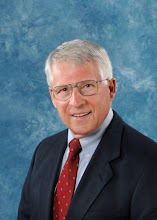From the beginning of CARRI, we have worked to combine the knowledge we have gained from prominent disaster researchers enlisted in the national research team assembled by Tom Wilbanks at Oak Ridge National Laboratory with that of the ‘on-the-ground’ research done in the Gulfport/Gulf Coast Area, the Memphis Urban Area, and the Charleston Low Country Area. The goal is to develop an assessment framework that any community can use to assess its resilience. The framework will combine a statistical snapshot of the community based on readily available data sources, with a self-assessment that provides a lens for the community to examine its assets at risk, its resources, and its planning, leadership and communication.
The national research team has provided valuable information as we work toward developing the assessment framework.
Craig Colten, from Louisiana State University, R.W. Cates, and S.B. Laska, from the University of New Orleans, overviewed the lessons from Hurricane Katrina that relate to disaster recovery and community resilience. Susan Cutter, from the University of South Carolina, provided valuable insights into how the concept of resilience can be understood from the perspective of hazards, disasters and emergency management—pointing out that research in these areas has always been done with an eye on practical policy. Lance Gunderson, from Emory University, researched how resilience, as it has been applied to ecological systems, can inform work on human communities. Betty Hearn Morrow, from Florida International University, examined how socially vulnerable populations are affected by policy decisions and the implications for community resilience. Susanne Moser examined how research on global climate change can inform our thinking about community resilience.
These researchers have all, from different perspectives, kept us aware of the existing bodies of research that can directly inform the CARRI concept of community resilience. Because these are researchers who have always had their eye on the policy implications of their work, I have not been surprised to find a great deal of resonance between their work and what we have heard from community leaders as they have raised issues and concerns about resilience. Certainly most everyone—disaster researchers and policy makers—have been mindful of what seemed to work and not work after Katrina. All have realized that the initial response was only part of the story and that the rest is still being written as recovery efforts continue. As we have talked to those involved in emergency management, they have come to understand that response is not recovery, but it is intimately connected to it. It is becoming understood that just as we are planning our responses to disasters, we also need to plan to our recovery. The interaction and connectedness between ecological and human community systems is recognized as a two-way street with respect to recovery. Certainly there is acceptance from the leaders that socially vulnerable population need consideration in a variety of ways in both emergency response and recovery and the reality of climate change has finally penetrated into local policy-making.
All of this work provides a backstop to the development of an assessment framework. Without it, we could not be successful.
Subscribe to:
Post Comments (Atom)

No comments:
Post a Comment